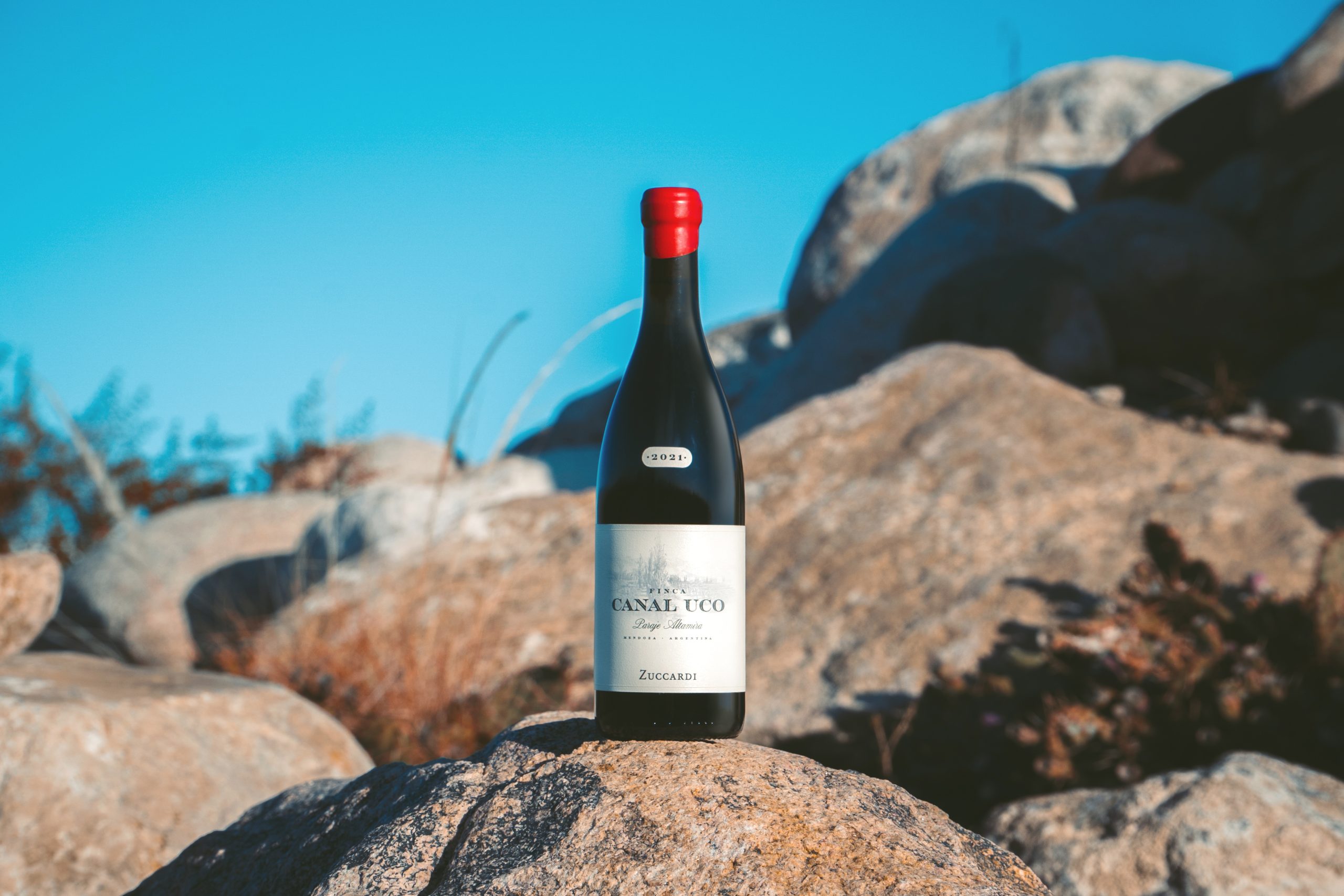Andriano and Terlan: taking Alto Adige’s white wines to new heights
Filippo Bartolotta explores how Andriano and Kellerai Terlan have simultaneously joined forces and forged their own paths to become pioneers of white winemaking in Alto Adige.
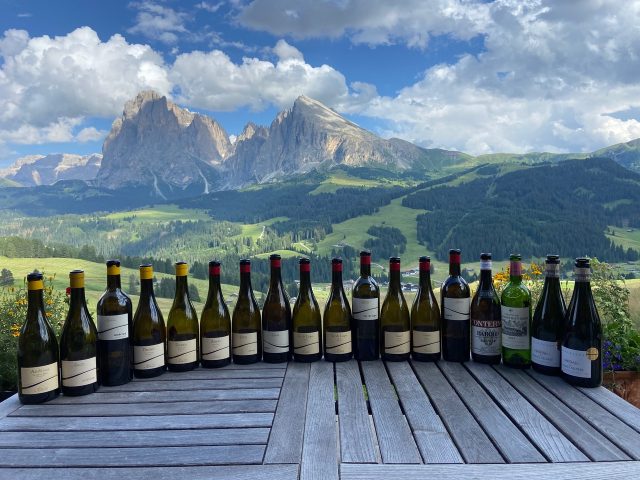
In 1893, the winegrowers of the tiny village of Andriano joined forces founding the first cooperative winery in Alto Adige, which back then belonged to the Austro-Hungarian Empire.
As far as the eye can see, fine vineyards at around 300 to 400 metres above sea level, luxuriant orchards and yew woods that cover the slopes, in a landscape dotted with streams and natural ponds expressing the fascinating symbiosis between Alpine and Mediterranean vegetation. The enchanted wine village is located on the western side of the Adige river, which flows from the Alps to the south encountering along the way ancient castles and deep dark forests. So when I arrived on a late summer afternoon after many hours of driving I felt I should have gone for a restoring hike in that dark forest on the Gant Mountain.
I should have known better though as while I was watching the beautiful vineyards under the sun on the eastern slops of Terlano, I got caught in a very early sunset which brought a sudden overly quiet darkness along my path. On way back from Castel d’Appiano I felt as if I weren’t alone. The wolves are back in Italy, but I read somewhere we shouldn’t worry as, throughout thousands of years, they learnt to be around us. I started running not because I felt particularly scared but mainly to be on time for the aperitivo at the hotel. I told Alexandra Erlacher from Cantina Andriano about my adventure and she said: “On this side of the mountain it gets dark at 5pm and…the valley you chose for your hike is the only place in Alto Adige where people have actually spotted brown bears”!
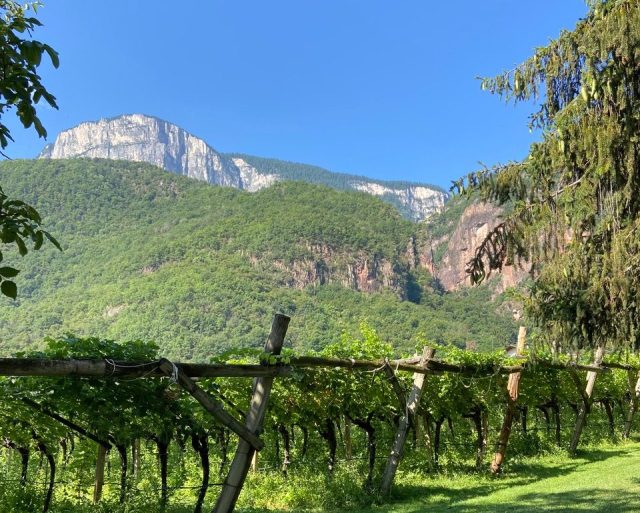
The bear conversation went on but I’ll stick to the wine subject for now. Alexandra carried on: “On this side the vines enjoy the early morning sun a couple of hours earlier then their sister vines on the west side and this together with the cold clay soil with the white calcareous veins give Cantina Andriano its unique terroir”.
I think Alexandra is right as most white wines from this cellar can be traced by their refreshening zippy twist and an intense fruit driven character with a slightly salty trait. Even the Merlot and the Pinot Noir show the salinity of the active C2a and cool temperature of this zone. The Kellerei Andrian GANT Merlot 2020 show a brilliant and transparent colour and a great aromatic complexity of blueberries, cedar wood, cumin spiced dark chocolate, raisins and violets. The palate is velvet and round with a really deep finish. The older brother Kellerei Andrian GANT Merlot 2013 was one of my favourite red of this Alto Adige expedition showing the style of the 2020 vintage with a higher degree of salinity and crunchiness.
On the other side of the river, at 1.5 miles from Andriano is another tiny wine village which gives the name to another cooperative winery born with 24 vigneron in 1893, just a few months later: Terlano.
Almost a stone’s throw from each other and yet the harvest in Terlano usually starts two weeks before due to the afternoon heat and the warmer volcanic soil.
The vineyards of Kellerei Terlan are all located on south facing terraces made of red porphyry rock of volcanic origins. A sandy loamy soils with a high quartz content with (opposite to Andriano) zero calcium carbonate. These factors result in a high permeability to water, a limited nutrient supply and thus balanced growth with naturally limited yields. “All vineyards never exceed 49hl per hectare, some high altitude parcels get down to 45 and for our Rarity wines we do not exceed 40”, said sales and marketing manager Klaus Gasser.
Another big difference is the altitude: some of the Terlano vineyards go as high as 900 m.a.s.l., slowing the whole maturation process down.
Neighbours can be worst enemies or great allies though. So in 2008, after 115 years, the two wineries took an historic decision, signing an alliance.
An alliance between two co-operative wineries which brings the 143 growers and the 190ha of Terlano, together with the 80 growers and 90ha of Andriano. A Fort Knox of quantity, quality, ethics and economics. With over 2 million bottles of wine a year; a staggering level of quality insured by the supervision of the truly humble and scrupulous head winemaker Rudi Kofler; an imprinting of uncompromising ethics which came with the foundation of the coop built to remunerate the work of all vignerons and the wonderful economic results with a production which goes always sold out. I have no doubts these two wineries represent two of the most avant-garde realities not only in all of South Tyrol, but also in all of Italy.
And this year Cantina Andriano and Cantina Terlano celebrate their 130th anniversary with a series of special tastings which got me to explore deeper the fantastic Alpine wine world of Alto Adige.
The curious fact is also related to the white wine driven DNA which has been the focus of this cooperatives since the beginning while the rest of the region has been mainly focusing on red wine making all the way up to the early 80’s. Today, 64% of Alto Adige’s overall production is white wines, while Terlano and Andriano are 70% white wines oriented. This is one of the very few Italian reality which has been focusing on a very important project for the research and study of the evolution and longevity of white wines.
“I joined the company in June 1994 after tasting a dozen vintages of Terlano from the 50’s and 60’s and I decided to stay deciding with all the vigneron to keep the tradition” said Gasser.
Thanks to the historical archive made up of around 100,000 labels with vintages starting from 1955 to the present day and some rare older bottles including the founding year 1893, they can offer the market a precious selection of old vintages increasing the value of the entire range.
The first white Terlano was produced in 1893, but the success of the modern history is strictly linked to the 1970s, and specifically to Sebastian Stocker, the brilliant kellermeister of the winery, who started the separate vinification of some of the best batches of single vines and then to age them on their lees for several decades inside 25hl steel tanks. Rarity was born with the 1979 vintage, bottled in 1990 and sold in 1992, and some of that 1979 is still in the inox. Like many successful stories, Rarity is the combination of intuition and a mistake.
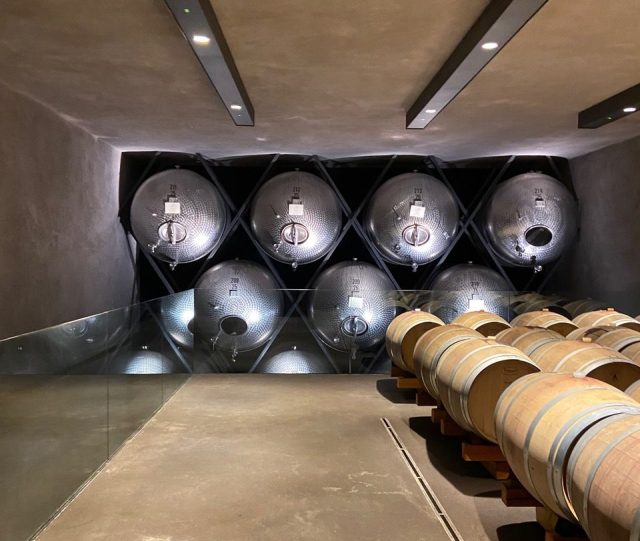
“Stoker had purchased a few inox vats to produce some sparkling wine but the coop board voted not to make sparking wines hence Sebastian got stuck with this vats and decided to try some experiments keeping some of the greatest batches in contact with the lees as long as possible” Gasser explained.
“This reductive wine making style improves drastically the complexity and the longevity of the wines,” added Kofler. I learned about all this story while in the caveau of the cellar with Gasser and Kofler opening a bottle of what for me has been the oldest Sauvignon Blanc I have ever had: a deliciously bright and juicy Cantina di Terlano, Terlaner Sauvignon Blanc 1961, with so much balsamic perfumes, sweet citrus fruits and gooseberry extract.
As mentioned, there’s at least 100.000 bottles stored in this cellar but with some precious gems still hidden. “Stoker started to hide some of the bottles to prove the age-ability of the whites like this bottle we are drinking now. We are sure there are still quite a few hidden somewhere we haven’t yet found” said Gasser.
Stocker’s precious legacy is now in the hands of this amazing team which is managing if possible to be even more precise and careful in showing the maximum terroir driven expression of these wines, with special attention given to Sauvignon Blanc when it come to Andriano, and Pinot Blanc when talking about Terlano.
Andrius is the Sauvignon Blanc standard-bearer of the whites of the ancient cooperative cellar.
During a vertical tasting of Cantina Andriano, Andrius Sauvignon Blanc held in the coziest Alpine restaurant ever, Raucher Hutte, the oldest and the youngest Sauvignon of Kellerei Andrian were my two favourites. The setting of the tasting room with a stunning mountain view was the perfect scenario to taste these wines.
Kellerei Andrian, Andrius Sauvignon Blanc 2013 was an excellent expression of this variety, which manages to maintain the varietal characteristics by finding further complexity in spiciness, tertiary notes but above all in juiciness and above all youthfulness.
Kellerei Andrian, Andrius Sauvignon Blanc 2021 offers mountain herbs, asparagus, lime, lemons and a touch of thyme and mint. A fantastic saltiness and a restrained style, this current vintage is a bottle to enjoy now and to keep for a a dozen years.
The cool climatic and soil composition at Kellerei Andriano results in drastic night excursions provided by the enchanted Gant Mountain and with global warming this sounds like a blessing. Should you be fancy an introduction to a crunchy absolute best value for money – at around €10 – Sauvignon Blanc, give Kellerei Andriano Floreado 2022 a go.
So going back to the east side of the Adige now with the southern exposed vineyards of Kellerei Terlano the expectation is to find broader, riper and maybe more alcoholic style wines? The very focused Julia Springeth of Terlano while getting the cars ready for a vineyard exploration says: “wait till you see the Vorberg vineyards!”
We drive up the mountains at almost 900m.a.s.l level to check some of the oldest and most beautiful Pergola Trained Pinot Blanc and the scenery is breathtaking. We meet one of the vigneron who is manning the vines like a garden and he exudes a sense of pride and joy in showing his vineyard management. These people can still afford to work on this heroic vineyards only thanks to the modern cooperative system which pays them a higher price for their fruit.
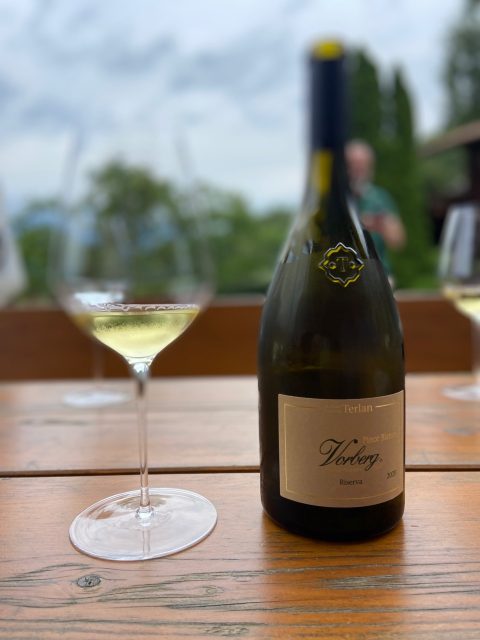
Kellerei Terlaner, Voerberg 2020: Classic vinification in big cask of 75hl 40-years-old and 50% malo – in the past it was all malo. As off 15 years less malo to retain freshness. One year of fining in oak, plus six months in concrete on the fine lees with racking and batonage.
Partner Content
White flowers, almond, almond paste; white peach, great aromatic herbs and a fantastic elegant finesse. Refreshing with a great citrus peel and reactive. Very deep, white stone fruit, a touch if anice, a tiny element of reduction. Every corner of the palate is touched by the wine and a final touch of match head makes it into one of the greatest value white wines in Italy at €30 per bottle.
Sticking to the world of Pinot Blanc, we have to talk about Rarity now.
As a matter of fact, as far as the Rarity selection is concerned, for 11/26 editions, including the latest 2009 and 2010, the choice fell on Pinot Blanc. Every once in a while there’s a 100% Chardannay Rarity, or even 100% Sauvignon Blanc, but Pinot Blanc seems the king here.
“The secret of the great integrity and balance that always distinguish the wines of the Rarity selection, as well as in the vineyard sites, lies in the particular vinification, with the first year of ageing in wooden barrels with very little sulphur dioxide, an oxidative environment in the which the wine opens and becomes broader, followed by a very long fining on the lees in the 25 hl steel containers to build aromatic depth, complexity and stability,” Kofler explained during a hike in the mountains.
On several occasions I have been opening quite a few bottles of Rarity Pinot Bianco 1988, 1996 and 2002, and they have always outperformed the expectations with all tasters for the joyous vibrancy of the fruit and the vibrant minerality.
This time round we had a vertical tasting of Terlaner starting from the 1950s.
Kellerei Terlano, Terlaner 1957
Unimaginable bright pear and mango fruit some bayleaf, gunpowder tea, smoked orange peel, a tray load of flints and a licorice and citrus finish. The oldest and yet tasting still young!
Kellerei Terlano, Terlaner 1966
Quince, brioche, dry white flowers, honey, dry apricots and tangerine. A touch of earthiness and some tobacco with a slightly Fino saltiness and a great old vintage Champagne complexity.
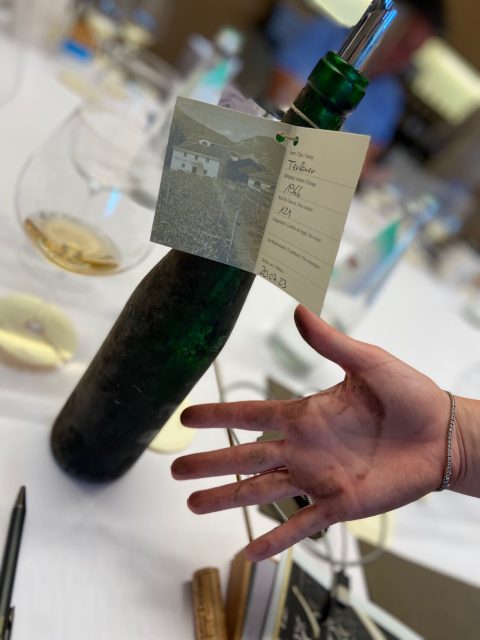
Kellerei Terlano, Rarity 1991
Kofler and Gasser do not know what the blend was and if they don’t…then nobody does! There’s an amazing elegant smokiness in this wine which pops out silently in between an array of all citrus fruit possible form lemon to lime to grapefruit and citron fruit. An extremely sharp design of the texture with a broader bee wax and creamy finish only for e moment before it turns into the sharpest blade! Drinks now, age forever!
Kellerei Terlano, Rarity 2008
One year in oak, then full malo fermentation like all Rarity and then 10 years in inox and bottling in 2020 with 85% Pinot Blanc, 10% Chardonnay, and 5% Sauvignon Blanc. Dry flowers, almond paste, anice, saffron and head match. Beautiful papaya and tangerine fruit with an enticing floral edge which brings pure joy. The palate is refreshing, savory and austere with so much juiciness and power at once. Not just an amazing white wine, but rather an amazing wine.
Kellerei Terlano, Rarity 2009
I can’t display proper tasting notes about this vintage as I haven’t tasted it in battery but during a dinner at Mill Restaurant -one of the warmest, most laud back and yet delicious restaurants in Alto Adige-. I choke my notes of a clean, detailed and focused white with a nectarine and floral nose and a structure palate with a gun flint finish. Yummy.
And what about the other whites? Well there’s a never ending selection but the most marked distinctions concern the different stylistic approach, already visible in the choice of blend percentages. There’s the historic Terlaner Cuvée started in 1893 and as off 1972 is back in the market as one of Italy’s oldest Italian white Cuvée. It ages mainly in inox with a little bit of big oak cask. With its refreshing 60% Pinot Blanc, Chardonnay and Sauvignon Blanc.
Kellerei Terlaner, Cuvée Terlaner 2022
Anice, vanilla stick and a flintiness. On the palate is very sweet, smooth, round and juicy with a great voluminous mouthfeel. I like the touch with a lovely acidity and suppleness and an herbaceous finish.
Nova Domus and Terlaner Primo Grand Cuvée
These two wines have the same backbone, needless to say, Pinot Blanc – 60% in the Nova Domus and up to 70% in the Grande Cuvée – which gives the blend the structure and depth, while the Chardonnay provides the proverbial roundness and the smaller and smaller touches of Sauvignon Blanc – 10% in Nova Domus and 2-3% in Grand Cuvée – for an extra touch of tropical rather then green aromatics.
The best wines from the Nova Domus vertical Tasting:
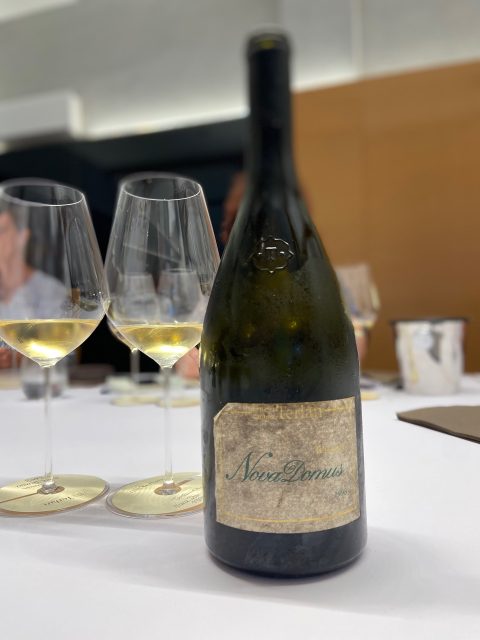
Kellerei Terlaner, Terlaner Nova Domus 2020
Aged in big 30HL Botti. Tropical aromas, ripe fruit and a broad spicey palate, broader with more depth, intensity and acidity. Beautiful vintage for all white wines in Alto Adige here expressing depth and length with a great muesli and floral finish.
Kellerei Terlaner, Terlaner Nova Domus 2010
Rosemary, honey comb, flinty and concentrated of clean tropical fruit with an enticing saffron note. Sweet palate, jucy, mediterranean herbs, a saline note, and so much juiciness. Still young and delicious.
Kellerei Terlaner, Terlaner Nova Domus 1998
Born as a very austere wine nobody wanted to buy. Now is beautiful with great white peach and lemon peel aromas a sweet and fragrant palate and a creamy texture with a medicinal herbs complexity. I have tried this vintage many times and it never disappoints!
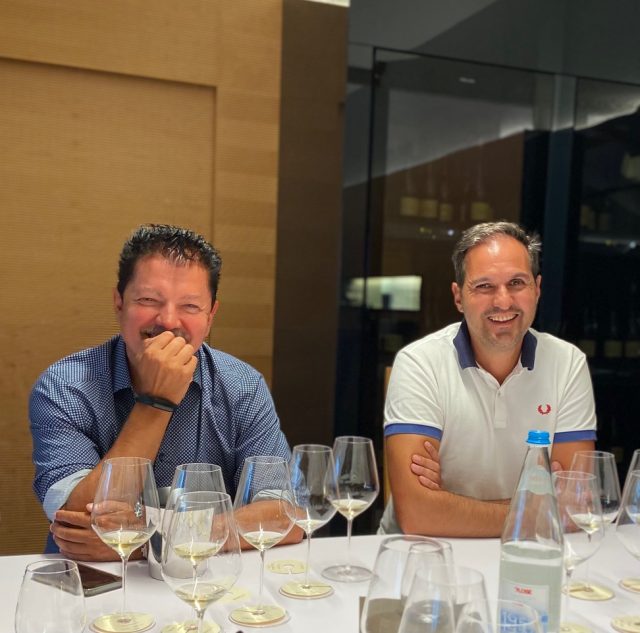
Kellerei Terlaner, Terlaner Primo Grand Cuvèe vertical:
This wine was born with the 2011 vintage with the ambition to become one of the icon wines of Alto Adige. Here all the blending components come from the oldest cru sites only: Vorberg for the Pinot Blanc, Kreuth for the Chardonnay and Winkl for the Sauvignon Blanc. “We choose the fruit from three to four extreme parcels to express the minerality, the savoriness and that flintiness and volcanic presence our terroir can give us,” said Kofler.
Kellerei Terlan, Terlano Primo Grand Cuvée 2020
Tangerine, cumquat, white chocolate and a contrasting mineral and smokey note. Creamy and voluminous and yet restrained and sharp as a balde. This wine has got so much depth, finesse and tension. It is enjoyable now but it can hold for two decades.
Kellerei Terlan, Terlano Primo Grand Cuvée 2019
Walnuts, almond, almond flowers, peach and nectarine. Some tropical notes with an intriguing perfume of hibiscus and white pepper. Vibrant palate with a great refreshing body of citrus fruit and white flowers. Mineral, and with a great pulpy touch.
Kellerei Terlan, Terlano Primo Grand Cuvée 2018
A more floral version with also water fruit and a broad palate. Fantastic length and depth with a great complexity of dry fruit, like figs and dates and a citrus finish.
Kellerei Terlan, Terlano Primo Grand Cuvée 2016
Maybe the most austere of the lot with a lot of lemons and limes together with earl grey and a lively mouthful with some almost tannic structure. A wine to age and wait.
Kellerei Terlan, Terlano Primo Grand Cuvée 2013
The most opulent of all. A multi layered stratification of white and yellow fruit, honey, honeydew melon, some butter and a creamy round palate.
Both Andriano and Terlano have their roots in the Alto Adige’s winemaking tradition, which dates back over 2,000 years to when the Romans brought the first vines to the area. Over the centuries, local farmers have learned to cultivate vines and produce high quality wines that have become famous throughout Europe. And 130 years ago, two separate groups of vigneron decided to get together in an association of producers to make sure they were gonna get the right share of their work.
These ventures today have not only proven their role as pathfinders who set the correct route on how to run a successful cooperative winery in Alto Adige, which is actually still an unmatched model in the whole of Italy as well, but they have also shown the world how “across the street neighbours” can set up such a close alliance to become the pioneers of fine modern whites of Italy.
Related news
Castel Group leadership coup escalates
For the twelfth day of Christmas...
Zuccardi Valle de Uco: textured, unique and revolutionary wines

